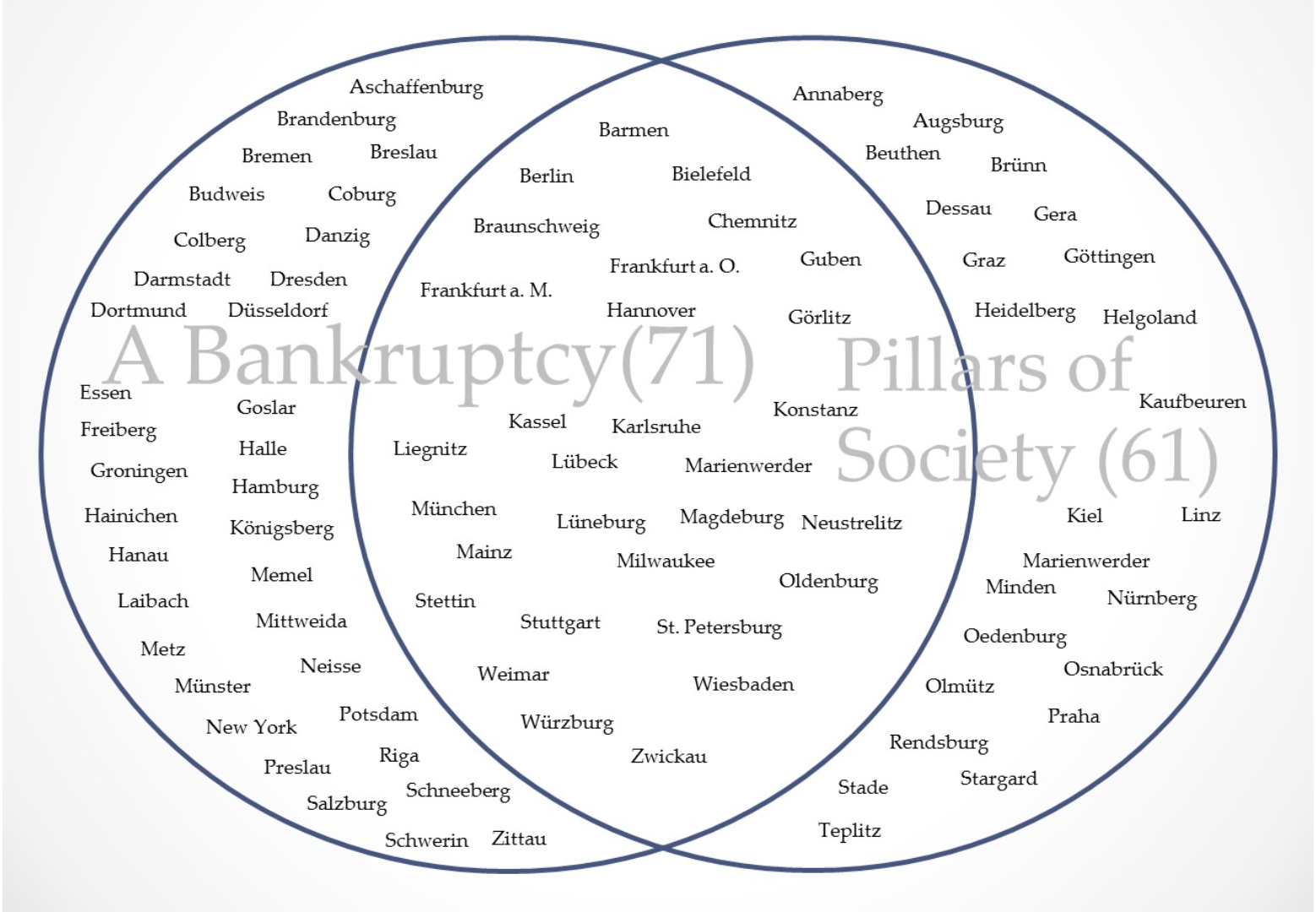Ibsen on the German Stage 1876–1918: A Quantitative Study (Narr Francke Attempto Verlag 2018) explores the early reception of Ibsen on the German stage from a quantitative angle using the performance database IbsenStage as a research tool.
The book is based on a doctoral thesis submitted by Jens-Morten Hanssen in 2017. The aim of this project site is to present the research questions, the methodological approach, and the main findings of the thesis.
Research Questions and Choice of Method
Digital humanities have opened up new avenues for Ibsen scholarship, and developments within the field of e-research methodologies have formed a point of departure for questioning conventional assumptions. The relational, event-based performance database IbsenStage stimulates new lines of enquiry in regard to how to account for the global recognition of Ibsen. The early reception of Ibsen on the German stage is known to have been instrumental in the process that led to the formation of Ibsen the world dramatist. My thesis presents an investigation of Ibsen from the point of view of the German stage. How was he introduced and who were the people that produced his plays? How did his plays fare on the German stage? What characterizes the German Ibsen tradition in the period of the German Empire when seen from the perspective of the stage? What patterns emerge once we study the production history from a quantitative point of view using computational tools?
My choice of method represents a deviation from traditional approaches in a number of respects, first and foremost as a consequence of my use of IbsenStage as a research tool and e-research methodologies pioneered by the AusStage team. The particularities of my methodological approach are best described through the following shifts:
- the shift from traditional to digital humanities
- the shift from qualitative to quantitative research methods
- the shift from textual analysis to data analysis
My use of IbsenStage as a research tool illustrates the shift from traditional to digital humanities. Franco Moretti’s work and his concept of “distant reading” has been a major source of inspiration to the development of quantitative research methods. IbsenStage poses an opportunity of studying Ibsen’s global stage history at a distance, using computation and visualization tools to identify its major patterns.
A standard procedure for preparing a dataset for analysis is to transform the data into visual form. The graphs, maps, charts, and tables included in my thesis are generated on the basis of the IbsenStage dataset according to a two-step process. The first step involved making queries written in compliance with SQL which is a formalized language enabling users to engage in a ‘dialogue’ with the relational database, the second step entailed transforming the result sets into visualizations using software tools of various kinds. These visualizations are inserted not merely to illustrate arguments or underline conclusions, but rather to initiate the process of questioning conventional assumptions and testing new hypotheses.
Brief Summary of the Main Findings
1 The Initial Success of Pillars of Society
The initial phase of Ibsen’s German stage history was marked by the major success of Pillars of Society, a success seemingly well accounted for by the documentation provided by the bibliographer Jens Braage Halvorsen in the Ibsen chapter of his encyclopaedia of Norwegian authors. My research has uncovered that Halvorsen was wrong in three regards: First, Pillars of Society was twice as much performed on the German stage than indicated by him. Second, Halvorsen stated that the success was restricted to the German-speaking parts of Central Europe. But Pillars of Society paved the way for Ibsen both westwards across the Atlantic to Milwaukee and eastwards to St. Petersburg in Russia (fig. 1). The performances in Milwaukee and St. Petersburg, presented by local resident theatre companies to an audience of German immigrants, illustrate how migration patterns affected the spread of Ibsen’s works already from the outset. Third, Halvorsen suggests that the success was extraordinary in its kind. However, the German stage featured similar successes every season. In terms of box-office draws, Pillars of Society was not even top five. The initial success of Pillars of Society can only be properly accounted for against the backdrop of a highly commercialized theatre industry, where a repertoire dominated by comedies and French Boulevard plays were produced first and foremost to secure box-office income. On the German stage, Pillars of Society was accommodated to fit into this theatrical context.
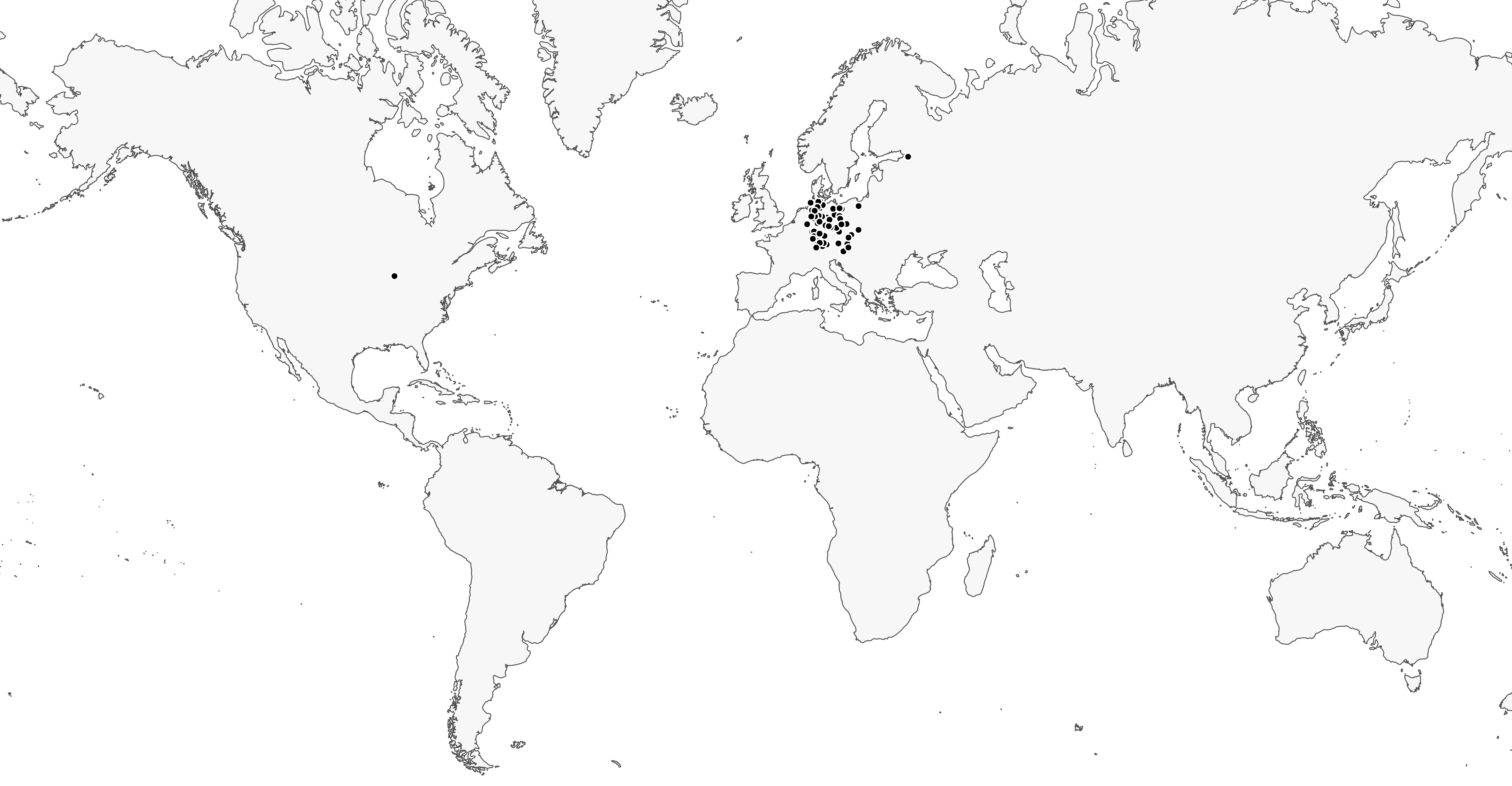
Fig. 1: Map of Pillars of Society on the German stage 1878-1881
In the further process of researching the context of Ibsen’s German stage success with Pillars of Society, I found that Bjørnstjerne Bjørnson’s A Bankruptcy paved the way for Ibsen in a much more concrete sense than hitherto known. It is well known that A Bankruptcy was a major source of inspiration to Ibsen when he wrote Pillars of Society. But the connections between the two plays in terms of theatre reception have remained unexamined. I found a striking overlap between the theatres that presented A Bankruptcy and the theatres that later presented Pillars of Society. The diagram in figure 2 juxtaposes city names that stand for the venues that presented the two plays, the left circle captures a total of seventy-one venues that produced A Bankruptcy, the right circle a total of sixty-one venues that produced Pillars of Society; the overlapping area in the middle shows thirty-one venues that presented both plays. Reception documents also suggest that many of the stages that produced Pillars of Society did so mainly to follow up the preceding success of A Bankruptcy.
Fig. 2: Overlap of theatres that presented A Bankruptcy and Pillars of Society
2 The Initial Failure of A Doll’s House
The initial failure of A Doll’s House represents the perhaps greatest enigma in Ibsen’s German stage history. Instead of following up the success with Pillars of Society, A Doll’s House inaugurated a three-year long period in which not a single Ibsen play was presented on the German stage (fig. 3). What caused A Doll’s House, the very play that soon propelled Ibsen into global fame and recognition, to fail so blatantly after the resounding success of Pillars of Society? I studied the use of the so-called German ending in which Nora stays home and was able to document that the majority of the German stages that produced A Doll’s House during 1880-81 used the alternative ending. In some productions, however, companies switched between the original and the alternative ending. Tracing theatre reviews I discovered no distinctive differences in the critical reception of productions using the original ending from those using the alternative ending. Theatre critics and audiences disapproved of the play regardless of ending. So that line of research did not prove satisfactory. Network analysis provided a more rewarding approach. I found that the network of stage artists engaged in German Ibsen events during 1876–1881 had a low degree of connectedness (fig. 4). At this point, German stage artists had not yet begun to claim ‘ownership’ of Ibsen as they would later do. This caused Ibsen to lose momentum on the German stage the moment his plays no longer fulfilled expectations at the box-office, in the early 1880s that was exactly what was the case with A Doll’s House.
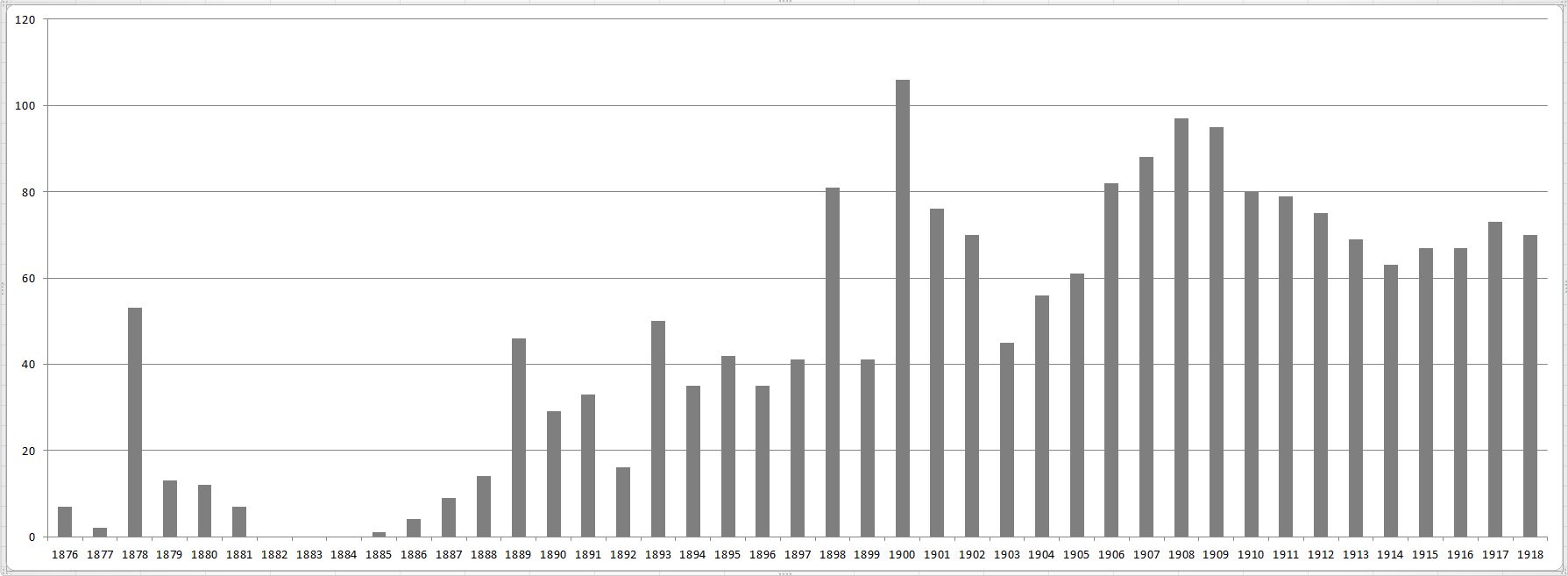
Fig. 3: Distribution of German events by year

Fig. 4: Stage artists linked by German events 1876-1881
3 The Late 1880s: Diversification and Differentiation
The late 1880s saw a diversification in the use of Ibsen on the German stage. In the light of Bourdieu’s model of the field of cultural production, we may differ between an avant-garde use of Ibsen, represented by artists and intellectuals associated with three emerging movements, the modernists, the naturalists, and the independent theatre movement, and, on the other hand, a commercial use of Ibsen, represented by bourgeois theatres. According to Bourdieu, the 1880s witnessed the development of two opposed sectors, the pole of pure production and the pole of large-scale production. In Germany, the vanguards of the independent theatre movement, above all Otto Brahm and his Freie Bühne, were operating in compliance with principles associated with the pole of pure production – most notably a strong anti-commercial spirit, a striving for autonomy, and an urge to reinforce the socio-critical function of the performing arts. Just like in France, Ghosts stands as the epitome of the advent of the independent theatre movement on the German stage, and Ghosts also plays a major role in the conventional narrative of how Ibsen came to be regarded as the father of modern drama. However, evidence held by IbsenStage reveals that events connected to the modernists, the naturalists, and the independent theatre movement, occupy only a marginal position. Within the bigger picture, Ibsen’s international breakthrough around 1890 was above all owing to a growing wave of A Doll’s House performances in the German-speaking parts of Central Europe and globally. Data interrogation further suggests that A Doll’s House was not embraced by the avant-garde, but rather incorporated into the repertoire of theatres operating within the confines of mainstream culture. The conventional narrative according to which Ibsen achieved his international breakthrough following the seminal Ghosts productions of Antoine in Paris, Brahm in Berlin, and Grein in London has concealed the significance of the rapidly growing stage success of A Doll’s House.
4 A Doll’s House and the Star System
Three connecting systems were particularly instrumental in spreading A Doll’s House on the German stage: the touring system, the star system, and the system of solo guest performances. In the dataset of German events during 1876-1918 there are a total of 318 instances of solo guest performances. I found a female overrepresentation among these, two-third of the artists that appeared as solo guest performers were women. There was a specific reason for this: almost half of the events were A Doll’s House performances featuring a solo guest performer in the Nora part. Unlike the first generation of German Noras, such as Hedvig Niemann-Raabe, who failed to incorporate A Doll’s House into the star system, the subsequent generation, above all represented by Agnes Sorma, succeeded in this regard. In the course of the 1890s, actresses turning into divas by way of the Nora part came more and more to the fore. The character was not only a career building part that could propel female artists into stardom, the play and its heroine soon became icons of the women’s movement and developed into a site of contestation over domestic, social, and artistic matters.
Twenty-five German actresses were making solo guest performances as Nora in the period of the German Empire. By far their most prominent exponent was Agnes Sorma who toured on a regional, national, and international level. The system of solo guest performances and the star system had far-reaching implications: Economically, it was a very lucrative system for those who gained access to it. Second, for female artists such as Sorma it provided a means to challenge the male dominance of the theatre industry. Third, it affected the social fabric of the German stage. By constantly appearing as solo guest performer opposite of changing ensembles in different cities, Sorma is one of the greatest connectors of the German Ibsen network, tying together segments of the network that would otherwise have remained unconnected (fig. 5).
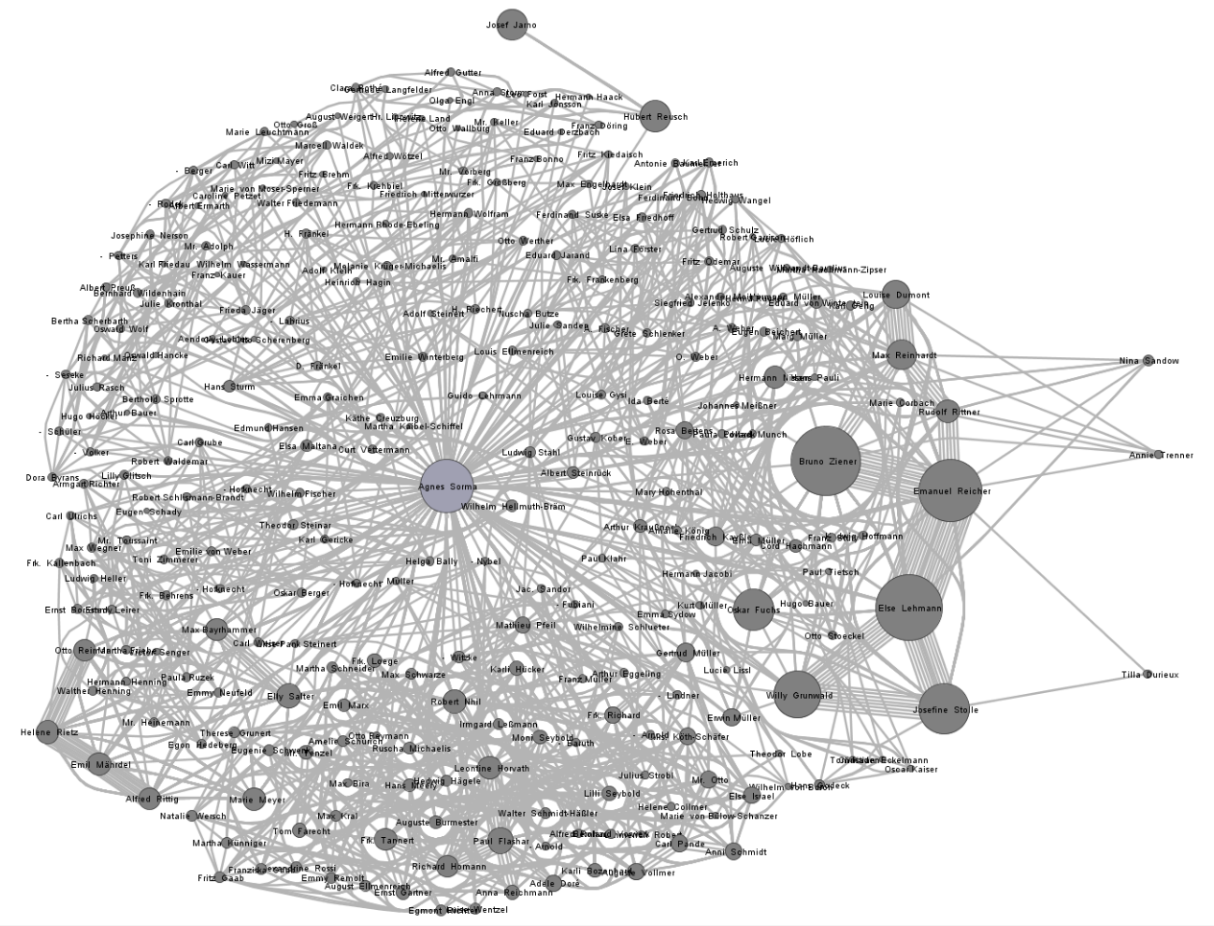
Fig. 5: Agnes Sorma's Ibsen network
5 The German Naturalisation of Ibsen
By the turn of the century, Ibsen was at the height of his international fame, and the frequency graph in figure 6 shows that the new century was inaugurated by a peak representing the highest annual number of German events in the period under scrutiny in my thesis, and that was above all owing to the stage success of When We Dead Awaken. The contextual circumstances surrounding the publication in book form and the ensuing theatrical distribution of Ibsen’s final play demonstrate not only that Ibsen was a dramatist well in the process of being consecrated and canonized, but also that the German naturalization of Ibsen had come full circle, to the extent that the German edition of When We Dead Awaken was marketed and distributed as an ‘original’ work of dramatic art. As was the case with A Bankruptcy and Pillars of Society in the 1870s, Bjørnson and Ibsen again featured on the list of the most frequently produced playwrights in the theatre season 1899/1900, suggesting the commercial viability of two of their plays, Beyond Human Power and When We Dead Awaken, respectively. Yet seen from the perspective of geographical dissemination, the distribution flow of Ibsen’s ultimate play did not have the same direction – from the centre to the periphery – as Pillars of Society. At this point, stages in the province did not need stages in the major cities to ‘lead the way’ in producing Ibsen (fig. 7).
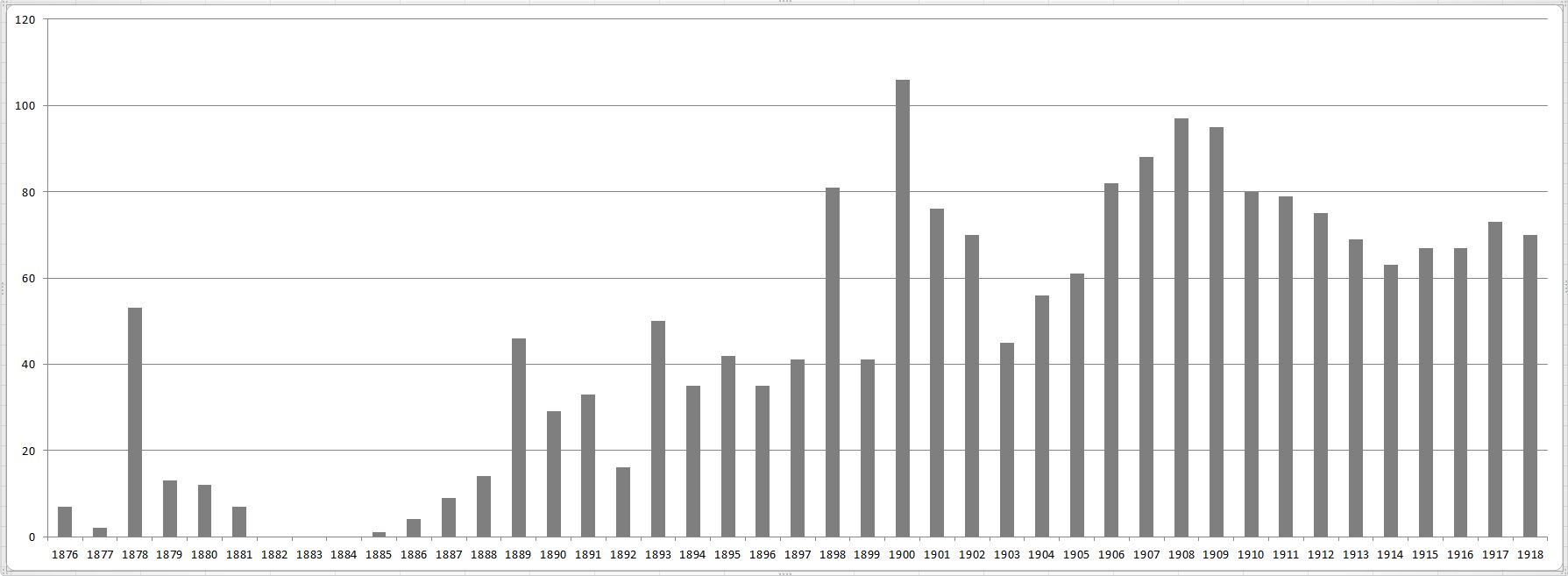
Fig. 6: Distribution of German events by year
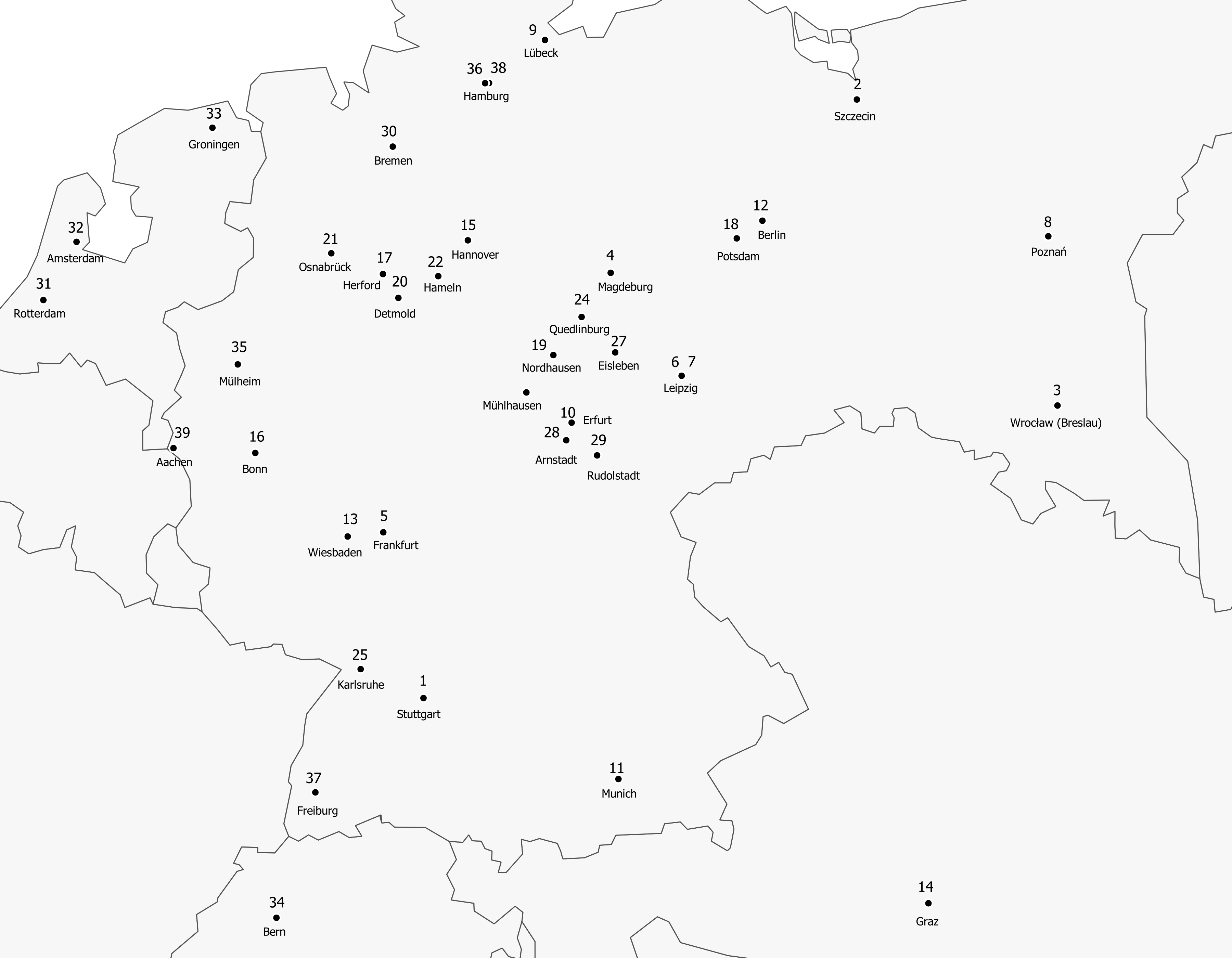
Fig. 7: Map of German When We Dead Awaken events 1900
6 The German Ibsen Cycles
The Ibsen cycle tradition is a further testimony of Ibsen’s strong command of the German stage during the first decade of the twentieth century. There is a strong tradition in Ibsen scholarship to consider that everything Ibsen wrote forms a coherent whole. Parallel to this, a tradition developed of stringing Ibsen plays together in performance cycles. The interpretative approach of critics and scholars has had a particularly strong appeal in Anglo-American Ibsen research. The performative approach of stage artists and theatre practitioners, on the other hand, has played a significant role in the German Ibsen tradition, but only had marginal impact in other language areas.
Nearly forty German Ibsen cycles are documented and analysed in my thesis, most of them presented at venues in the major cities such as Berlin, Vienna, Hamburg, Leipzig, and Stuttgart (fig. 8). Otto Brahm’s Ibsen cycle comprising Ibsen’s thirteen contemporary plays from The League of Youth to When We Dead Awaken presented in chronological sequence over consecutive nights at the Lessing-Theater in Berlin, constitutes their most prominent example. By admitting Ibsen a prominent position in his repertoire by performing multiple Ibsen plays at short intervals, Brahm created an Ibsen cult that culminated with the Ibsen cycle.
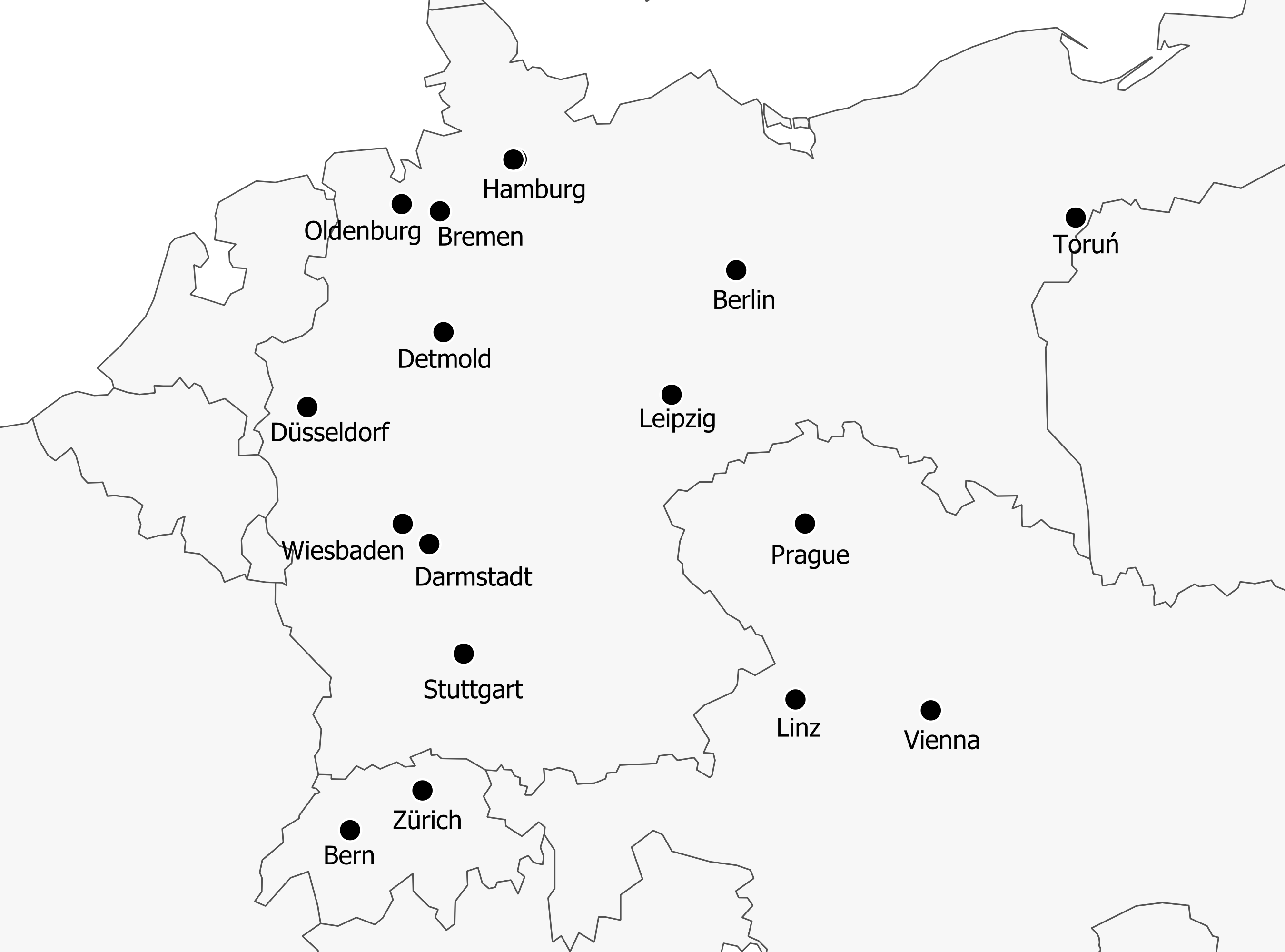
Fig. 8: German Ibsen cycles 1889-1922
7 Touring in the Name of Ibsen
The Ibsen cycles were mainly presented at venues in the major cities, but the tradition had a counterpart outside the realm of institutional theatres in metropolitan areas: From the late 1890s onwards, several touring companies were established that had two things in common: the companies were named after Ibsen; and they were presenting Ibsen plays on provincial stages both in and outside the German Empire (fig. 9). These companies were strong advocates of a shift of emphasis away from the realist core of Ibsen’s dramatic production to his late symbolist plays, and When We Dead Awaken was the most frequently performed play in their repertoire. They were united in dissatisfaction with the prevalently naturalistic approach to Ibsen, as represented by Otto Brahm.
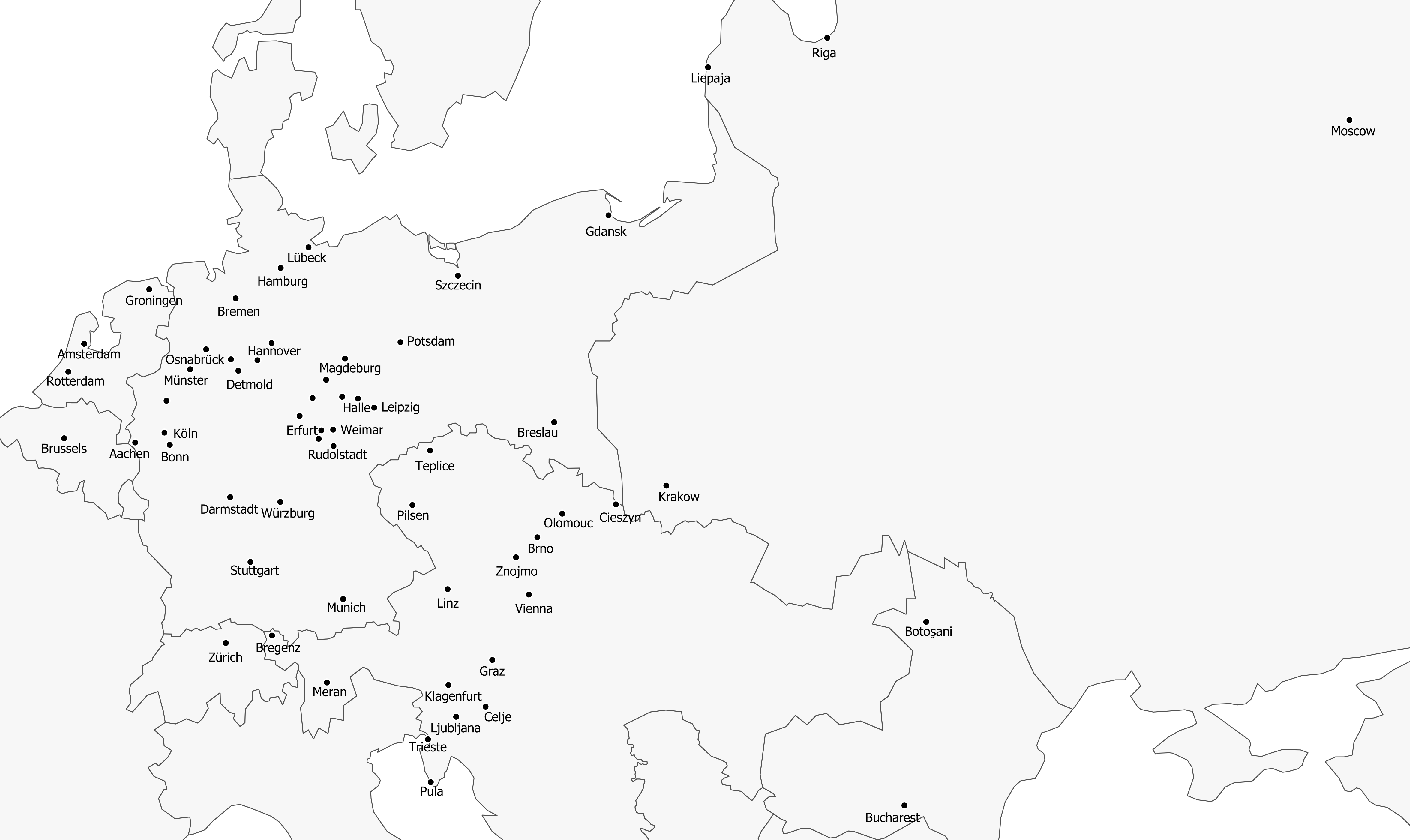
Fig. 9: Map of Ibsen events presented by the five Ibsen ensembles 1898–1914
The network of stage artists engaged in presenting Ibsen on the German stage during 1876–1918 is a network dominated by a relatively small group of highly connected hubs, whereas the vast majority of artists were only involved in a few events. The German hubs were involved in three kinds of Ibsen activities: one part of them were connected to the Ibsen cycle tradition, the second part were involved in the activities of the touring Ibsen Ensembles, whereas a third group appeared as independent artists with careers dominated by solo guest performances and prestigious international tours, Agnes Sorma and Albert Bassermann being their most prominent exponents.
8 Peer Gynt and the Renegotiation of the German Ibsen Legacy
1910 represents a turning point in the German stage history of Ibsen’s plays. The event numbers show a declining tendency, and the year marks the start of a gradual decrease extending over more than thirty years (fig. 10). Ibsen’s plays seem to lose their former appeal. Yet one particular play ran counter to the trend. Peer Gynt entered the German stage and suddenly turned into one of Ibsen’s most popular stage plays. The advent and the rapidly growing stage success of Peer Gynt on the German stage from around 1910 onwards was part of a process of renegotiating the German Ibsen legacy. The dominant image of Ibsen as a writer of social problem plays was challenged. Peer Gynt served as an eye-opener to neglected parts of Ibsen’s dramatic production.
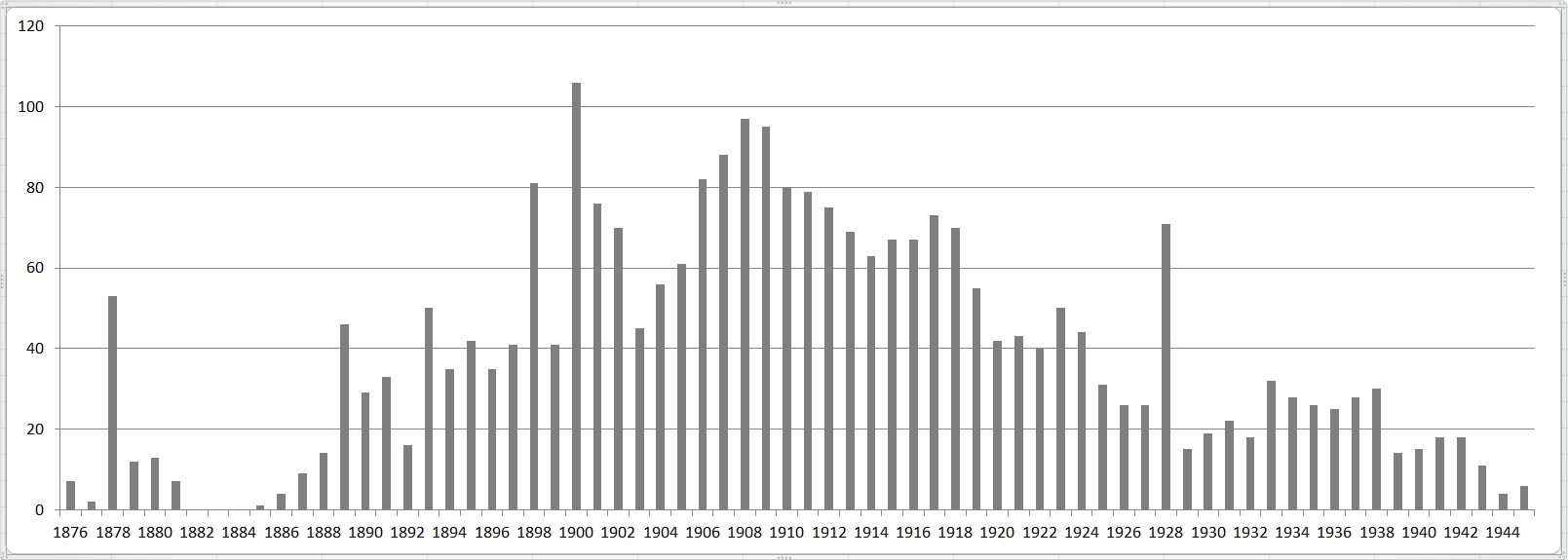
Fig. 10: German Ibsen events 1876-1945
